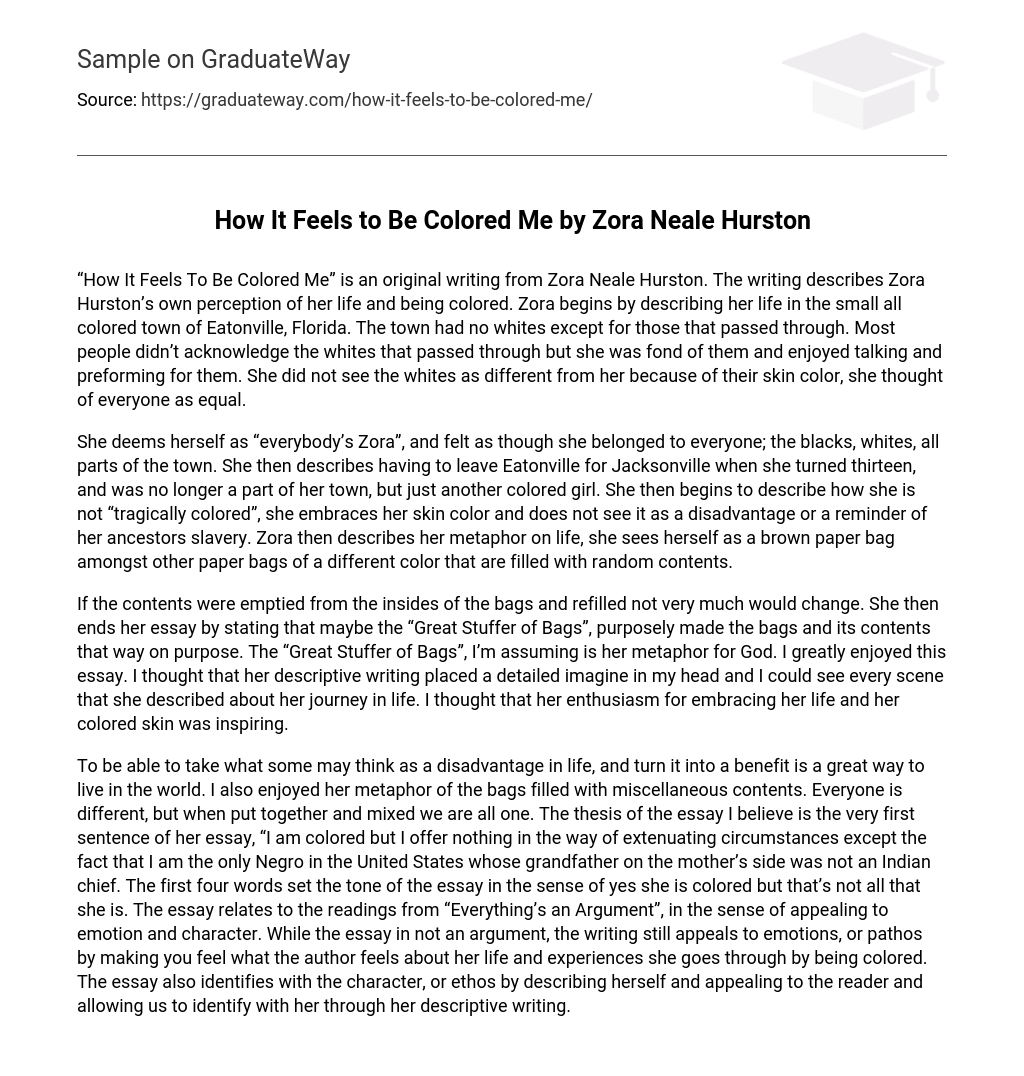“How It Feels To Be Colored Me” is a piece by Zora Neale Hurston that explores her personal perspective on her identity as a person of color. In the writing, Zora reflects on her experiences living in Eatonville, Florida, an all-Black town where white people were only occasional visitors. While others in the town ignored these passing individuals, Zora found pleasure in interacting with them and entertaining them. She believed that skin color did not separate or define people; she saw everyone as equal.
Zora perceives herself as the “everyone’s Zora”, and feels a sense of belonging to all; the blacks, whites, and every part of the town. When she turned thirteen, she had to leave Eatonville for Jacksonville. She no longer belonged to her town, but was just another colored girl. However, she doesn’t see herself as “tragically colored”. She embraces her skin color and doesn’t view it as a disadvantage or a reminder of her ancestors’ slavery. Zora then metaphorically compares life to a group of paper bags of different colors filled with various contents. In this analogy, she sees herself as a brown paper bag among the others.
If the contents of the bags were emptied and refilled, not much would change. The author concludes by suggesting that perhaps the “Great Stuffer of Bags” intentionally made the bags and their contents that way. I believe this metaphor refers to God. I thoroughly enjoyed this essay. The author’s descriptive writing painted a vivid picture in my mind, allowing me to visualize every scene she described on her life journey. Her enthusiasm for embracing her life and her unique skin color was truly inspiring.
Living in the world by taking what some may consider a disadvantage in life and turning it into a benefit is a great way to live. The metaphor of bags filled with miscellaneous contents is also enjoyable. Though everyone is different, when put together and mixed, we become one. The thesis of the essay can be found in its very first sentence: “I am colored but I offer nothing in the way of extenuating circumstances except the fact that I am the only Negro in the United States whose grandfather on the mother’s side was not an Indian chief.” These first four words set the essay’s tone, emphasizing that being colored is just one aspect of the author’s identity. The essay aligns with the readings from “Everything’s an Argument” as it appeals to emotion and character. It may not be an argument itself, but it still appeals to emotions or pathos by evoking the author’s feelings about her life and colored experiences. Additionally, the essay establishes a connection to character or ethos by describing the author and allowing the reader to identify with her through descriptive writing.





